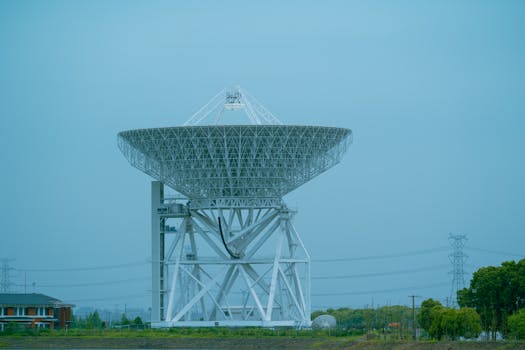The Future is Now: Exploring the Cutting-Edge Innovations in Satellite Telecommunications

Satellite Telecommunications is the focus keyword for this article, and it represents the future of communication. The future of satellite telecommunications is here, with cutting-edge innovations revolutionizing the industry. From advanced satellite constellations to new transmission technologies, the possibilities are endless. In this article, we will explore the latest developments in satellite telecommunications and what they mean for the future of communication.
Satellite telecommunications have come a long way since the first satellite was launched into space. Today, satellites play a critical role in global communication, providing connectivity to remote and underserved areas, enabling international communication, and facilitating the transmission of data, voice, and video signals. The industry is experiencing a significant transformation, driven by technological advancements, changing consumer behavior, and the increasing demand for high-speed, low-latency connectivity.
One of the most significant innovations in satellite telecommunications is the development of advanced satellite constellations. These constellations consist of multiple satellites working together to provide global coverage, increasing the capacity and reducing the latency of satellite communications. Companies such as SpaceX, Amazon, and OneWeb are launching thousands of satellites into low Earth orbit (LEO) to create these constellations, which will enable the provision of high-speed, low-latency internet services to anyone, anywhere in the world.
Another area of innovation in satellite telecommunications is the development of new transmission technologies. Traditional satellite transmission technologies use radio frequency (RF) signals to transmit data, voice, and video signals. However, these signals are susceptible to interference, attenuation, and other forms of degradation, which can affect the quality of service. To address these challenges, researchers are exploring new transmission technologies, such as optical communications, which use light to transmit data, and quantum communications, which use quantum mechanics to enable secure communication.
In addition to these technological advancements, the satellite telecommunications industry is also experiencing significant changes in the way services are delivered and consumed. The increasing demand for high-speed, low-latency connectivity is driving the adoption of new business models, such as satellite-as-a-service, which enables customers to access satellite capacity on a pay-as-you-go basis. This shift towards a more flexible, on-demand approach to satellite services is enabling new use cases, such as IoT connectivity, smart cities, and emergency response.
The future of satellite telecommunications is exciting and full of possibilities. With the development of advanced satellite constellations, new transmission technologies, and innovative business models, the industry is poised to play an increasingly important role in the global communication landscape. As the demand for high-speed, low-latency connectivity continues to grow, satellite telecommunications will be at the forefront, enabling new applications, services, and experiences that will transform the way we live, work, and communicate.
The impact of satellite telecommunications on society will be significant. With the ability to provide connectivity to remote and underserved areas, satellite telecommunications will help to bridge the digital divide, enabling access to information, education, and economic opportunities. The industry will also play a critical role in disaster response and recovery, providing emergency communication services and enabling the rapid deployment of critical infrastructure.
In conclusion, the future of satellite telecommunications is now, and it is exciting. With cutting-edge innovations, new business models, and a growing demand for high-speed, low-latency connectivity, the industry is poised to transform the way we communicate. As we look to the future, it is clear that satellite telecommunications will play an increasingly important role in shaping the global communication landscape.